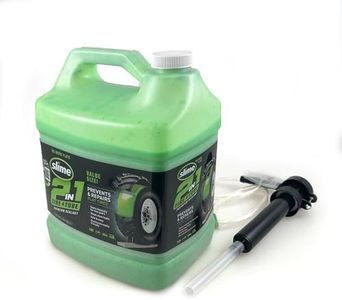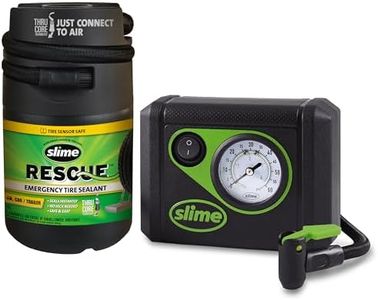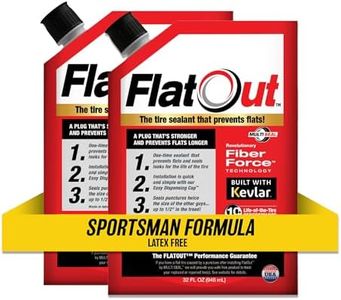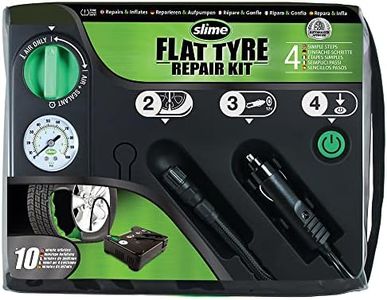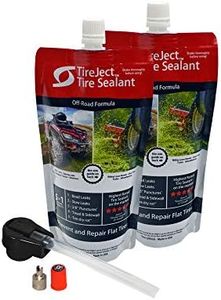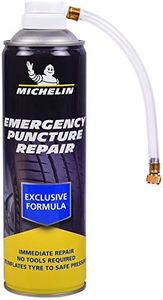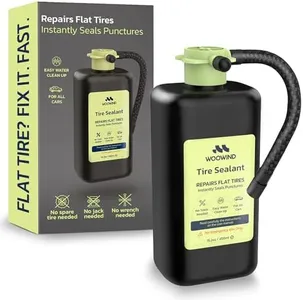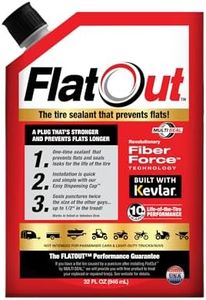We Use CookiesWe use cookies to enhance the security, performance,
functionality and for analytical and promotional activities. By continuing to browse this site you
are agreeing to our privacy policy
10 Best Tire Sealants
From leading brands and best sellers available on the web.By clicking on a link to a third party's website, log data is shared with that third party.
Buying Guide for the Best Tire Sealants
When you're selecting a tire sealant, it's important to understand what you're trying to accomplish—quick emergency repairs on the road, longer-term protection against flats, or routine maintenance for vehicles used in tough environments. Tire sealants can save you from being stranded with a puncture, but not all formulas and types are right for every situation. Knowing the key features and how they relate to your needs will help you pick the product that suits your vehicle, use case, and convenience preferences best.Sealant TypeTire sealants mainly come in two forms: those designed for emergency puncture repairs and those intended as preventive solutions. Emergency sealants are typically aerosol cans that both inflate the tire and seal small punctures, useful for quick fixes on the road. Preventive sealants are liquid solutions poured into the tire beforehand, creating a layer inside that automatically seals future punctures as they happen. If you want a hassle-free solution in the event of sudden flats, emergency sealants are handy. If you want to avoid flats altogether and are okay with a bit of upfront preparation, preventive sealants could be the better choice.
CompatibilitySealants can vary in their compatibility with tire types (such as tubeless, tube, or specific vehicle types like bicycles, motorcycles, cars, or trucks). It's crucial to check if the sealant works with your tire setup. Some formulas are safe for all tires, while others may only work with certain types or could harm parts like tire pressure sensors. Always match the product with your vehicle and tire type to ensure effective sealing and to avoid potential damage.
Puncture Size LimitEach sealant typically specifies the largest puncture it can effectively seal, usually measured in millimeters. A lower maximum means the sealant is better for tiny holes (like those from thorns or nails), while a higher maximum can handle bigger objects. If you ride or drive mostly on clean streets, a sealant good for smaller punctures is usually enough. If you frequent rough terrains, opt for one that can plug larger holes.
Longevity Inside TireLongevity refers to how long the sealant remains effective inside your tire before it dries out or breaks down. Some sealants are formulated to last a few months, while others may protect for a year or more. Longer-lasting formulas are good for infrequent users or those who don’t want to check or top-up their sealant often. Shorter-lifespan sealants may suit those who are happy to reapply regularly as part of their maintenance routine.
Ease of ApplicationSome sealants are simple to use, requiring just a squeeze into the tire or connecting an aerosol can. Others may require removing the tire or the valve core, which can be trickier if you’re not comfortable with bike or car maintenance. If you prioritize quick and mess-free applications, look for products known for straightforward use. If you're comfortable doing a bit more work for a potentially stronger seal, you might be fine with more involved products.
Clean-Up and Environmental ImpactSealant compositions vary—some are latex-based, some are fiber-filled, and a few are water-based and eco-friendly. Latex-based products can get messy but might seal faster, while water-based ones are easier to clean up and less likely to harm the environment. Consider how much you value easy clean-up and environmental effects, especially if you expect to use sealant frequently.
